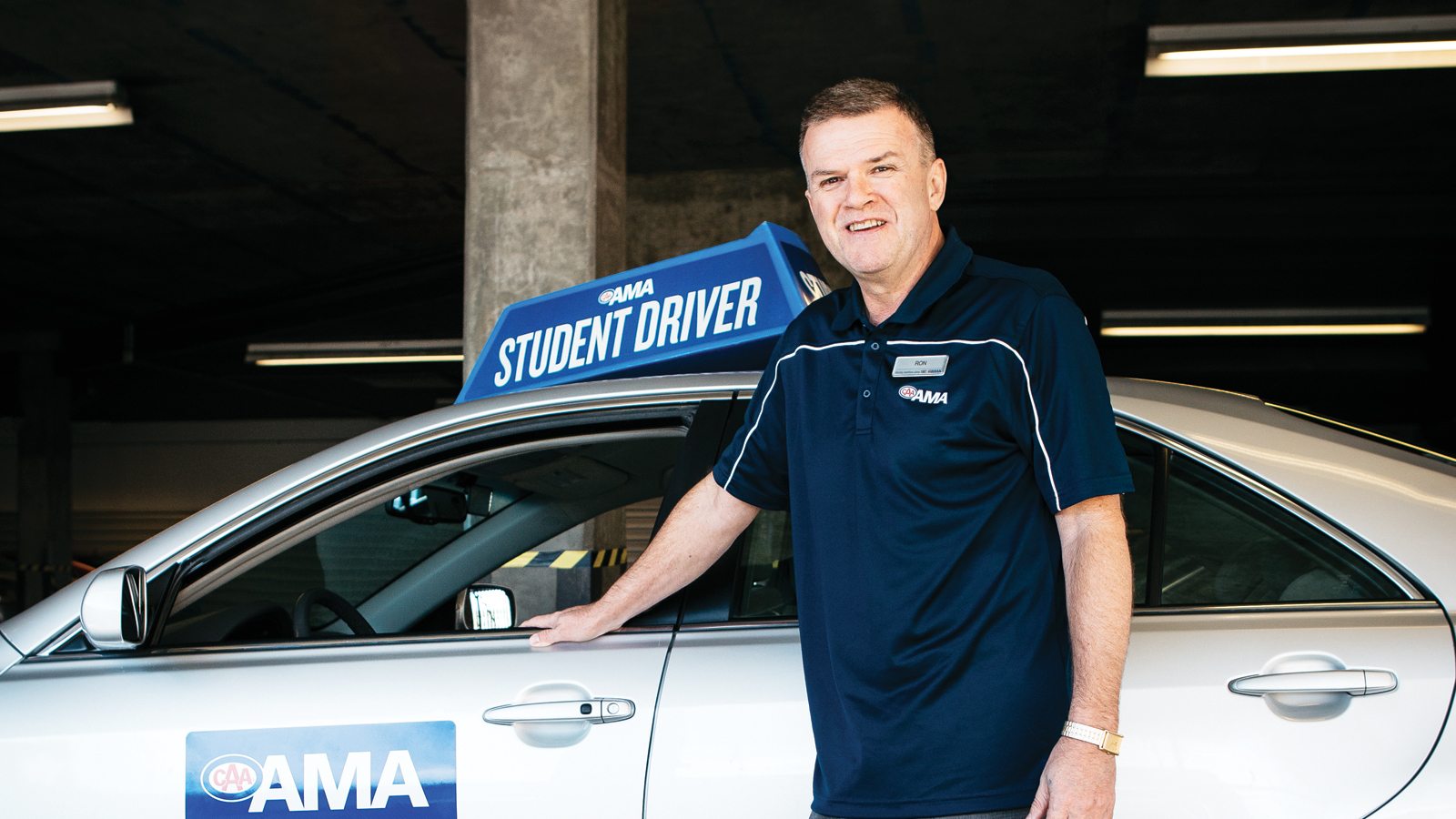When Ron Wilson started teaching the AMA New Driver program 30 years ago, there were no anti-lock brakes, backup cameras or even seatbelt laws. Now, as manager of Fleet Safety Services Operations, a division of AMA Driver Education, Wilson oversees the training of more than 10,000 professional fleet drivers each year.
Over its history, AMA has schooled more than 880,000 novice and long-time drivers while customizing the in-vehicle experience for every student. Wilson has seen AMA’s programs grow and evolve—but the basics of good defensive driving remain tried and true.
Who taught you to drive?
I’ve taken many driver-training programs, but at first it was my dad. He wasn’t as patient as a trained instructor would be. Learning from a pro is different than with a regular driver. Research has shown that young people imitate the driving behaviour of their parents or closest role models—who may have bad habits they might not be aware of. Parents also tend to be more emotional and less objective teachers.
How has AMA’s driver education program evolved?
We’ve kept up with technology in cars and in the classroom. For instance, we now have 14 online courses, and we have specialized offerings for new drivers, senior drivers and company drivers. Our online new driver program was the first in Canada when it launched in 2014. You can learn at your own pace and replay lessons if you need to.
MORE TO READ
Tips for teaching your teen to drive
What sets AMA’s driver education programs apart?
We teach skills to keep you safe on the road for your whole driving career. Our instructors receive ongoing training and participate in workshops that go beyond what’s required for the government road test. We also invest in research and develop tools to help students learn and retain potentially life-saving driving skills. Most recently, we purchased a new driving simulator to enhance the learning experience.
What’s your number one piece of driving advice?
Drive to the conditions, whether it’s fog, rain, gravel or snow, and keep a safe space. Also, understand your vehicle’s high-tech features: They exist to aid you in driving, not for you to sit back and say, “I don’t have to use my skills as much now.”
MORE TO READ
Safer city driving in six easy steps
What’s your favourite car?
At an early age I could name most of the cars from the 1960s and ’70s. As a kid, my favourite car was the Ford Mustang. Now I own two of them: a 2002 GT and a 2009 45th-anniversary Mustang.
It must be tempting to drive them flat-out.
I’m often asked what I think the safest vehicle is, but it’s more about the driver. You could be in the world’s safest vehicle, but if you don’t have the right driving behaviour, you won’t really be safe. I just enjoy driving my cars, not driving them aggressively.
GET ROAD READY
AMA’s New Driver Program has four learning options to fit your budget and schedule
Basic
• 15 online or 18 in-class learning hours
• 10 hours in-car
• $100 discount on AMA Insurance
• Automatic-transmission cars only
Premium
• 15 online or 18 in-class learning hours
• 14 hours in-car
• $150 discount on AMA Insurance
• Automatic or manual
Ultimate
• 15 online or 18 in-class learning hours
• 20 hours in-car
• $200 discount on AMA Insurance
• Automatic or manual
Online Only
• 15 hours of learning
• No in-car instruction
• Very affordable
